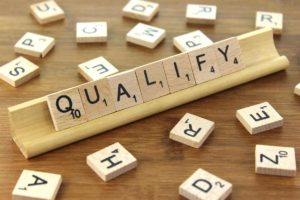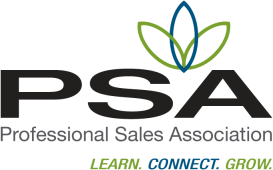 The amateur tends to embellish or construe what they assume conveniently to be a positive or yes in the buying process. In reality, a prospect’s verbiage may include, in its most promising form, a maybe. We can’t cash checks from maybe. We don’t earn the opportunity or seal the commitment unless we listen and apply what we learn for effect. We gain position and leverage when we listen and apply what we learn from the exchange. We can then create a strategy and generate action that is consistent and in alignment with the other person’s intent, message, and agenda.
The amateur tends to embellish or construe what they assume conveniently to be a positive or yes in the buying process. In reality, a prospect’s verbiage may include, in its most promising form, a maybe. We can’t cash checks from maybe. We don’t earn the opportunity or seal the commitment unless we listen and apply what we learn for effect. We gain position and leverage when we listen and apply what we learn from the exchange. We can then create a strategy and generate action that is consistent and in alignment with the other person’s intent, message, and agenda.
The courage to qualify opportunity from occurrence is the difference between an order taker and a professional. Ask the tough questions in a professional manner. Listen to what is said, strive for clarity, and work toward a mutually agreed upon understanding of the message and its intent. Ask when in doubt—clarity and direction can streamline and tailor your efforts to best achieve the intended result.
Converting a “suspect to prospect” and “prospect to client” is a process. We must listen and apply what we learn. We must shorten the distance between thought and action. Choose to make action directed and purposeful. Move forward through incremental wins. The goal is to get to the next step in the process: the next meeting, the next directed activity. There are steps that breed familiarity and there are requisite imperatives that implore us to ask questions and hear the answers as accurately as our subjective nature will allow.
In sales, it is essential to have the fortitude and knowledge to ask the type of questions which generate an interest from the audience. Most of these questions should be open-ended. A buyer wants to know you care about them before they care about what you know. They need to feel this—they feel it when your word and action are in alignment. All you can ever be is you—be authentic in your approach.
Question with genuine interest—be prepared and informed. Ask questions with purpose. Acquire the knowledge of the other person’s position, agenda, and motive. Learning about others is a process; it is a process that forges the steel of the relationship through time.
Listening is a form of behavior that interprets sounds and applies meaning. We can hear external noise; we can tune it out or pay attention to it in a rote sort of mindless distraction. But, listening is a learned ability. Listening is formed from discipline, focus, and the enthusiastic willingness to learn.
The willingness to listen can help us understand. Listening activates ideas; it strengthens the platform of communication. Reality is founded upon the meaning ascribed from communication. Listening ties the message to the messenger. When our behavior is in alignment with our words, we establish a baseline of consistency and predictability. When we don’t listen to the words, concepts, or phrases of another, we enter the realm of assumption. When we infer and interpret without the benefit of clarification, we choose to hear, or fabricate, positive signs or words in the exchange.
APPLICATION CHECKPOINT
When you enter into dialogue with another, do you listen or speak first?
QUALIFY
Q – QUESTION – Ask your prospect the right questions. Start with: “Where are you from?” The first time you meet someone, their defense mechanisms are up. Bring that instinctual guard down by influencing them to start talking about themselves. Then start asking questions about their product, about their people, and about how they generate profit. Immerse yourself in their company’s process by being inquisitive.
U – UNDERSTAND – Because you asked the right questions, you can demonstrate your understanding of the prospect’s buying mentality and how your product is going to work for this particular prospect.
A – ANSWER – Be prepared to answer the questions about your person, your product, and your pricing.
L – LISTEN – BEYOND hearing (merely taking in information), you need to LISTEN. You need to digest the information to ascertain what the prospect actually wants.
I – INTEGRITY – The integrity of your potential buyer is the only thing you can’t qualify during this process. But what you promise your prospect must, at all times, be true and it must true-up! Integrity is a deliverable that is non-negotiable.
F – FOLLOW-UP – Follow-up on EVERY meeting obsessively. After every conversation, write a “thank you” email. Run your follow-ups with a sense of urgency.
Y – YOU! – Are you applying common sense with a sense of urgency? If yes, then YOU sell! You build your platform of value with AUTHENTICITY, and authenticity builds connections with people.

